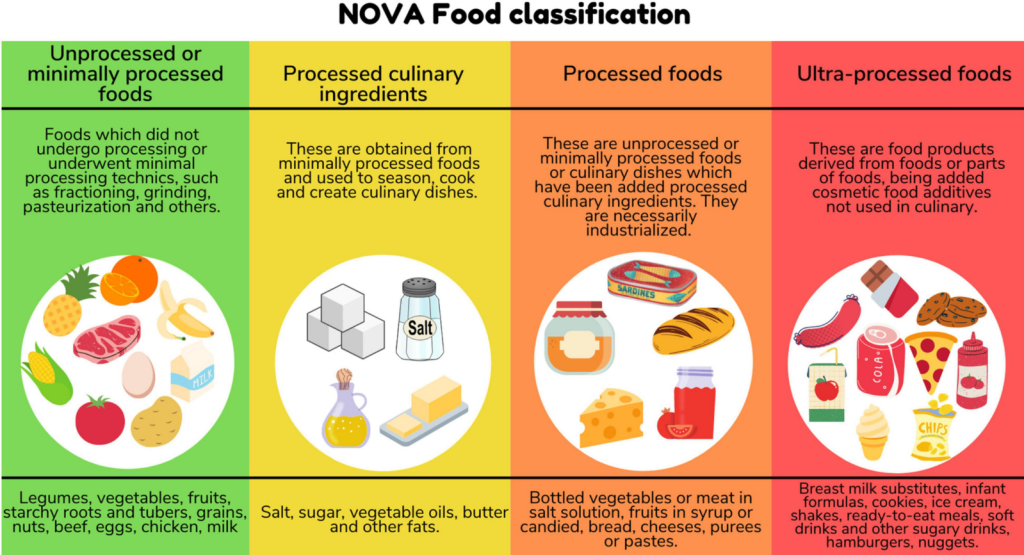The food processing sector is one of the fastest-growing ones in the country. It ensures that the farmers/ fishermen/ dairy owners/ poultry and other kinds of food producers don’t lose financially when production is more than what can be consumed or bought for consumption while still keeping the product in a fresh state. It prevents waste of food. It also generates huge employment opportunities. This industry is growing much faster than the GDP of India. The compounded annual growth rate is 15.2% and by next year, it will touch $535 billion. The private sector is involved largely. One of the key segments of this sector is the RTE – Ready to Eat (RTE) segment.
For many decades, Defence Research labs were experimenting with RTE for our troops in Siachin and other places where fresh foods couldn’t be supplied. The fruits of these experiments were shared with the then-upcoming food processing industry. People who couldn’t cook during the COVID lockdowns didn’t starve because of the RTE. Of course, the other component of the service sector which boomed was the food delivery sector. Even children could order food, often adding RTEs, some colas, and/ or candies.
In a recent study, the rural population of India is now spending more on processed food and drinks (colas) than on cereals as compared to 10 years ago. Rural obesity is also on the rise. In urban areas, spending on vegetables and pulses has gone down whereas spending on RTEs and Colas has gone up.
RTE Nomenclature Confusion in India
There are lot of variations of the term Ready To Eat or RTE in the world, especially in India. Ready to cook, or heat and eat/ drink type of foods like (Shahi paneer), snack (Maggi), or drink (Rasna). These foods are called by several other names like, fast food, junk food, convenience food, package food, or frozen food. Similarly colas, juices, milk, tea, coffee, and many other beverages come in bottles, tetrapacks or plastic sachets. Even the confectionery, savouries (namkeens) and mithai is available with long expiry dates, in factory-sealed packaging. Some of these foods are cheaper and more tasty hence more convenient for consumers.
There is a universally accepted NOVA classification of RTE’s which is still not enforced in India. Hence, it is difficult to separate healthy vs unhealthy RTE foods.
NOVA Classification
NOVA classification is a system for grading foods as per their extent and purpose of processing. It was first proposed by scientists in Brazil in 2009. It has divided foods in 4 broad groups or categories –

Unprocessed or minimally processed. Minimal processing is like grinding, pasteurisation with simple kitchen aids. Examples are uncooked ‘foods’ like salads, fruits, pasteurisation of milk, boiling of egg.
Processed culinary ingredients. These foods are made from items added to food with minimal processing. These items are usually available in kitchen like salt, simple sugar, spices butter, ghee. Most examples are ingredients that we use for our home cooked meals. Making cottage cheese (paneer), and yoghurt at home also fall in this category.
Processed foods, normally from industry. In these foods, processed culinary ingredients are added. These include foods made with simple ingredients like tomato puree, pastes for marinades, salt & water preserved fish and fruits preserved in syrups. Home or local bakery made bread is also considered a Processed food.
Ultra Processed Foods (UPF). In these foods, cosmetic food items are added. UPF as per NOVA is an industrial formulated edible substance derived from natural food or synthesised (made) from other organic compounds. The resulting products (food, snack, beverage etc) are designed to be highly profitable, convenient, hyper palatable (very tasty) often through addition of preservatives, coloring agents and flavouring agents. Other additions may include stabilising agents, saturated/ trans fats, excess of salt and sugar substitutes. Sometimes this kind of packaged foods may get contaminated with harmful microbes. They also have the risk of seepage of industrial chemicals. Lastly, quality of frozen items maybe compromised if the cold chain has been disrupted at any stage.
Some example of UPFs are branded breads, pizza base, branded yoghurt often with fruits, colas, mayonnaise, namkeens and thousands of other commonly consumed items which keep increasing by the day. A simple example is the difference between a home made kulfi (Simple processed) with a frozen dessert (UPF) being passed off as ice cream by some major brands today.
Are Ultra Processed Foods Healthy?
UPF products have been linked with many Non Communicable Diseases (NCD), also called lifestyle diseases since many decades. Cause and effect relationship for UPF causing Obesity could be established only in 2019. This was the final step. Cause and effect of UPF with other diseases listed below in a succeeding para is still under research.
Here, it is relevant to say that cause and effect relationships between smoking and lung cancer took almost 50 years. In this long period, millions continued to smoke unaware of the ill effects. Many developed respiratory disorders and others died of cancer. Keeping above in mind, the following diseases implicated by the research teams in those who regularly consume more of UPF and less of foods of categories 1 and 2 are listed below:
- Type II Diabetes. This is caused due to the very high sugar (or sugar substitutes) content included in most UPFs. In Highly processed foods with high fat content as well as high sugar, the disease might strike faster.
- Hypertension and other some other heart diseases. These are due to high salt content and /or high content of saturated trans fats.
- Certain cancers. As per a very recent publication of ‘Nature’, 29 cancers were studied. These cancers usually struck people in their 60s. In the last one decade, more cases have been detected in people before 50 years of age. These early onset cancers are more advanced and aggressive. Cause is not established but obesity, processed food and gut microbiome changes have been speculated. These are now being studied.
- Chronic Kidney disease. This occurs more in those who are taking dietary supplements and overload their body with high protein foods/ powders/ shakes; more than the body requires.
- Fatty Liver. Obviously, high intake of saturated fats is the cause.
- Mild depression, Anxiety and other mental health problems. In a recent small but controlled study, the incidence of mental health issues is three times more amongst UPF consumers than those who did not consume UPF.
- Ofcourse, Obesity is directly linked to UPF. Further, Obesity by itself is classified as a disease and is a risk factor of many other diseases.
Few Examples of UPF
- All Ready to eat foods – open & heat or open & add hot water/ milk foods. These include all breakfast packaged ‘nutritious’ meals as well as manufactured bread and buns. Plant butter, chocolate/ cheese/ nuts spreads.
- All packaged snacks, savouries and confectionery. Packaged and branded – idle, dosa, dhokla, samosa, bonda, vada, french fries. All namkeens and biscuits. All branded ketchup, sauces, chutneys and ready mix ‘tadka’ items.
- Sweetened beverages, zero sugar drinks, energy drinks, whisky, rum, gin and the like. Instant soups and all other prepacked sweetened yoghurt, milk, lime water and cocktail/ mocktail mixtures.
- Packaged sweets, mithai, desserts, icecreams, pastries, cakes, milk chocolates, mouth fresheners and the like.
- Processed meats of all animals, birds and fish. Tinned ham, bacon, sausages, salami and hot dogs or burgers made from such UPFs.
Conclusion
Going strictly by the NOVA system, simple foods fortified under government orders like salt, milk, oils, flour etc also fall in UPF. Similarly, there are other high fat, high salt and sugar foods with colours made by local restaurants or sweet meat shops (halwai) and bakeries which evade being declared UPF. Hence, it is the responsibility of the government and concerned administrators to make standards and come out with suitable laws to –
- Re-asses NOVA classification, keeping in view the typical Indian Processes and UPF.
- Write on food labels, the NOVA class.
- Put a ‘symbol of risk’ to consumers on their health irrespective of NOVA.
- Regulate the innumerable shops, bakeries, confectioners, vendors and the like in addition of high risk colours, sweeteners, stabilisers, preservatives and other organic compounds in the foods, snacks and beverages.
- Educate the public by multimedia on the ill-effects of UPF which have high content of saturated/ trans fats, sweeteners and salt.
- Have a high powered committee going in to advise whether foods with fat content and or high sugar and or high salt be taxed heavily.
- Educate the masses in a similar way as they did for iodised salt.
Which UPF to eat and in how much quantity is best left to the reader and their available time and capacity to cook at home. A study in China revealed that ill effects of UPF were less in those who consumed sufficient fruits, salads and minimally processed vegetables. General recommendation is to have less than 50% calories from UPFs or even homemade meals with UPF ingredients.
Children are most vulnerable and with the impending epidemic of childhood obesity (with its linked diseases) it is wise to observe and gently enforce healthy eating practices at home. School canteens are being regulated for safe foods but the vendors on the gate also need to be regulated by local police.
Awareness is the first step and it should start at home. Those who buy food ingredients, to those who cook and also to those who order cooked food (and RTE/ UPF) to be targeted first. Marketing and supply of UPFs is difficult to beat. But who is benefiting? The UPF manufacturers, the swanky eating joints of MNCs/ Desis and our own supply chains. We are losing money and our health. Don’t forget the pharma industry, they operate in similar lines.
Disclaimer: The views and opinions expressed by the author do not necessarily reflect the views of the Government of India and Defence Research and Studies
Title image courtesy: News-Medical








